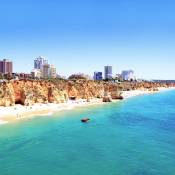Churches
The Franciscan monastery in Porto dates back to the 13th century and although the monks are long gone and the site much diminished there is still plenty to see. Topping most people's list is a visit to the Igreja de São Francisco with its exuberant Baroque interior of gold and carved wood. However, a ticket to see the church also covers entry to one of Porto's most unusual and macabre visitor "attractions".
The catacombs of the "Third Order of St. Francis" lie in the basement of the Casa do Despacho (Dispatch House) which lies...

This church is dedicated to Saint Peter (São Pedro) and replaces an earlier one that was all but destroyed by the great Lisbon earthquake of 1755. Taking a relatively simple outer form, the short bell tower to one side of the main entrance is believed to come from the original structure alongside its internal spiral staircase.
Saint Peter's contains the grave of the artist Josefa de Óbidos. More on her life and works can be discovered in the town's Municipal Museum. However, the...

Rising magnificently from a site outside of the ancient town walls of Óbidos, the Santuário do Senhor Jesus da Pedra came into being around 1750 as a memorial to King João V. What makes this structure particularly noteworthy is its hexagonal floorplan, which was the brainchild of baroque architect Capitán Rodrigo Franco.
However, legend also has it that the church was constructed to honour the otherworldly powers of a stone crucifix that had stood on the site since the second century AD and can now be found in pride of place behind the altar.
While still considered...

The Igreja de Santa Maria (Church of Saint Mary) is one of the most important religious structures in Óbidos, and has been for at least 1500 years. It hasn't been a Christian place of worship all of this time, however. It was first believed to have been the site of a Visigoth temple, before its conversion into a mosque when the Iberian Peninsula was ruled by the caliphates of North Africa. It didn't become a church until the twelfth century, during the gothic period.
That said, today's church takes more from the Renaissance of the sixteenth century, as can be seen from the ornate...

Records show that the second most-important church in Monchique was built upon the orders of King Sebastian of Portugal in the 1500s after he visited Monchique. Perhaps understandably, he had it named after the saint that shared his regal name.
Situated on the southern side of town, from the outside it looks closer to a fortress compared to the florid decoration of other churches in the region. This harks back to the era when Portugal was ruled by the Muslim kingdoms of North Africa and local Christians felt threatened in practicing their faith.
Inside, the Igreja São...

Monchique's primary church, the Igreja Matriz has been standing in the town since the sixteenth century, around the time when Henry VIII was King of England. Its structure is a fine example of local Manueline architecture, although it is also somewhat unusual in the fact it demonstrates a nautical theme despite its relative distance from the coast. Check out the tops of its columns in the main nave to see a pattern of twisted ropes carved out of the stone.
Other objects of religious art include a statue of the Virgin Mary attributed...

A fifteen-minute uphill walk from the cobbled streets of central Monchique is the Convento Nossa Senhora do Desterro. This ruined seventeenth century monastery had been used by the Franciscan order of monks until one day in 1755 when it was shaken to its foundations by the same earthquake that destroyed much of Lisbon.
Since then, it was first partially rebuilt and then eventually abandoned for a second time, creating a unique, eerie atmosphere that has seen the natural surroundings slowly creep among the ancient stones, including what...

Edging the old Jewish Quarter (judiaria) of Lamego, the Mosteiro de Santa Maria de Salzedas became one of the richest monasteries in Portugal when it was founded in the mid-1100s. While some would say it's now showing its age, careful preservation is continuing to ensure this important historic monument survives for a further 900-plus years.
Dominating the area's other structures, the monastery was created as a place of worship for the Cistercian order of monks. It was largely funded by members of the then king's household, perhaps to curry favour with both the divine and the ever-...
This simple whitewash and red tile chapel has a dramatic location surrounded on three sides by the waters of the Atlantic Ocean and the Ave River estuary. Its interior decoration takes its direction from its marine location, and is well known locally for its tiled flooring, impressive ceiling art, and seventeenth-century pulpit. This is despite the fact the chapel's origins lie in much earlier centuries. In fact, the chapel is thought to be possibly the oldest building in the city, dating back to at least 953 AD.
To one side you'll find an external staircase that climbs to the...
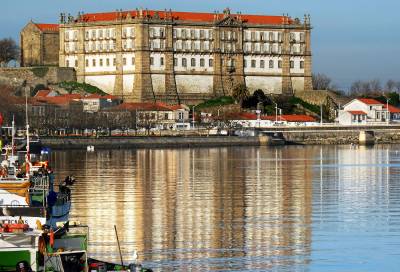
Perhaps the grandest structure to adorn the hills around Vila do Conde, the Convento de Santa Clara consists of a complex of structures which include the original fourteenth-century church, modern convent, and the Santa Clara aqueduct, the second-largest anywhere in Portugal. It is considered one of the best examples of Portuguese gothic beyond the Douro River.
Said to have been paid for by the illegitimate son of King Denis of Portugal in exchange for several masses each day being said in honour of the family. His earthly remains...


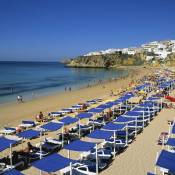 Albufeira
Albufeira
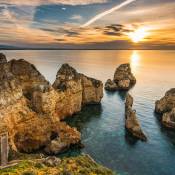

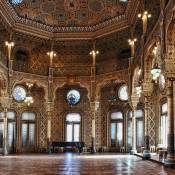


 Cascais
Cascais

